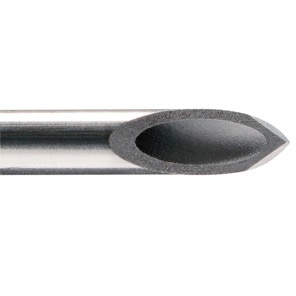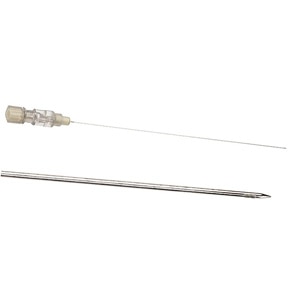The BD® Whitacre Spinal NRFit™ Needle is the needle you trust, now with ISO 80369-6 compliant safety features. Available in 8 sizes ranging from 88.9 mm to 119.1 mm and gauges from 22 G to 27 G, BD® Whitacre Spinal NRFit™ Needles also offer the option of thin walls (indicated as TW) for maximized flow through same gauged needles.
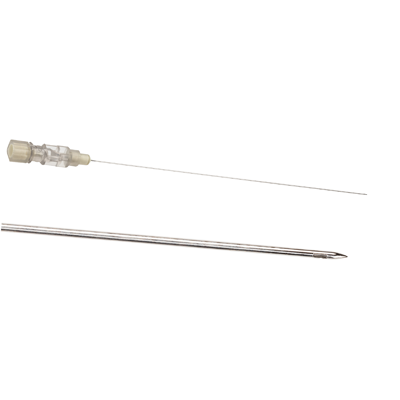
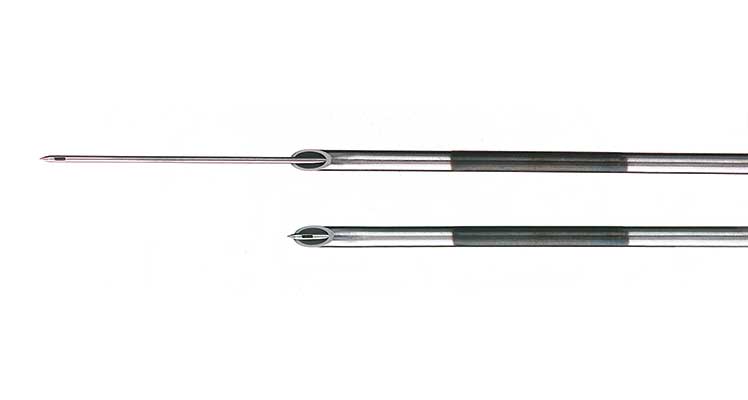
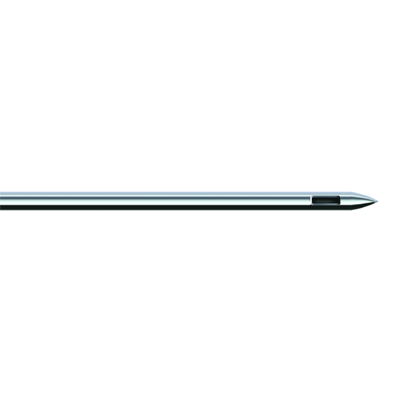

- Overview
- Products & Accessories
- EIFU & Resources
Better post-operative patient experience
With BD® Whitacre spinal needles that minimize the risk of postdural puncture headache (PDPH)2,3,4
Enhanced precision
With BD® spinal needles that enable visualization of CSF, aiding proper needle placement.
From a trusted partner
With a range of products and configurations to meet Anaesthesia needs throughout your facility.
BD® Whitacre needles yield a distinct tactile "click" or "pop" as the pencilpoint penetrates the dura, alerting the clinician of proper placement.
Pencil-point needles like the BD® Whitacre spinal needles have been shown to minimize the risk of PDPH compared to larger gauge, cutting-point needles²˒³˒⁴.
The BD® Whitacre spinal needle is supported by 25+ independent published studies.
BD® Whitacre spinal needles’ clear hubs enable anaesthesiologists to visualize CSF for proper needle placement.
Precision-formed side hole helps directional flow of anesthetic agents and helps reduce the possibility of straddling the dura⁵.
References
- Carson DF, Serpell MG. Clinical characteristics of commonly used spinal needles. Anaesthesia. 1995;50(6):523-525.
- Buettner J, Wresch KP, Klose R. Postdural puncture headache: comparison of 25-gauge Whitacre and Quincke needles. Reg Anesth. 1993; 18(3): 166–169.
- Corbey MP, Bach AB, Lech K, et al. Grading of severity of postdural puncture headache after 27-gauge Quincke and Whitacre needles. Acta Anaesthesiol Scand. 1997; 41(6): 779–784.
- Santanen U, Rautoma P, Luurila H, et al. Comparison of 27-gauge (0.41-mm) Whitacre and Quincke spinal needles with respect to post-dural puncture headache and non-dural puncture headache. Acta Anaesthesiol Scand. 2004; 48(4): 474–479.
- Urmey WF, Stanton J, Bassin P, Sharrock NE. The Direction of the Whitacre Needle Aperture Affects the Extent and Duration of Isobaric Spinal Anesthesia. Anesth Analg 1997;84:33-41
BD-22351
BD's collection of literature on industry and on our offerings gives you information you can use to continue striving for excellence.
BD offers training resources to help improve your clinical practices as part of our goal of advancing the world of health.
BD supports the healthcare industry with market-leading products and services that aim to improve care while lowering costs.
BD promotes clinical excellence by providing various resources on best practices, clinical innovations and industry trends in healthcare.
References
- Carson DF, Serpell MG. Clinical characteristics of commonly used spinal needles. Anaesthesia. 1995;50(6):523-525.
- Buettner J, Wresch KP, Klose R. Postdural puncture headache: comparison of 25-gauge Whitacre and Quincke needles. Reg Anesth. 1993; 18(3): 166–169.
- Corbey MP, Bach AB, Lech K, et al. Grading of severity of postdural puncture headache after 27-gauge Quincke and Whitacre needles. Acta Anaesthesiol Scand. 1997; 41(6): 779–784.
- Santanen U, Rautoma P, Luurila H, et al. Comparison of 27-gauge (0.41-mm) Whitacre and Quincke spinal needles with respect to post-dural puncture headache and non-dural puncture headache. Acta Anaesthesiol Scand. 2004; 48(4): 474–479.
- Urmey WF, Stanton J, Bassin P, Sharrock NE. The Direction of the Whitacre Needle Aperture Affects the Extent and Duration of Isobaric Spinal Anesthesia. Anesth Analg 1997;84:33-41
BD-22351
